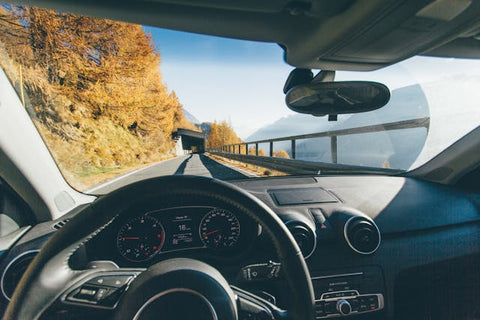Commercial trucks are a common sight on freeways; the large vehicles are a vital part of the nation’s supply chain. However, 18-wheelers can pose a significant threat to drivers and motorcycle riders. The vehicle's sheer weight and size can turn a fender bender into a catastrophic accident.
States like New York have laws in place to help keep everyone safe and this includes having left lane restrictions for commercial trucks. These restrictions are designed to reduce congestion and the risk of truck accidents.
Left Lane Driving Restrictions for Trucks and Motorists
New York has what’s referred to as a keep right law; the law simply requires all drivers, even motorcyclists, to keep in the right lanes.
The law doesn’t prohibit anyone from driving in the left lane, only when they can use it, and using the left lane is legal when:
- You’re passing a slower-moving vehicle
- For left turns
- When the exit is on the left
- If the right lane is closed

If you’re in the left lane, you’re required to merge to the right to allow faster-moving vehicles to pass, and this applies even if the other vehicle is going above the posted speed limit.
Your job is to control your vehicle’s speed, not anyone else. Let law enforcement handle policing other drivers’ rate of speed.
When you’re on highways and other three-lane roads, commercial trucks should stay in the right lane and use the middle lane for passing. If it’s a four-lane highway, truck drivers should keep to the two right lanes.
Occasionally, you may see designated truck and bus lanes. Cars, SUVs, and pickup trucks are prohibited from driving in these designated lanes. Motorcyclists are also prohibited from riding in a restricted lane.
Restrictions on the Thruway and Other Roads
New York’s Thruway system comprises parts of multiple freeways that include I-87, I-90, and I-287. The 570-mile road system doesn’t allow commercial trucks, buses, or any vehicle hauling a trailer to use the left lane. Commercial trucks are only allowed in the right two lanes as outlined in CRR 21 § 103.6.
The Thruway isn’t the only road in New York prohibiting commercial trucks from using the left lane. Once you get into New York City, you’ll find roads where commercial trucks are prohibited, regardless of which lane they drive in.
For example, commercial trucks are prohibited from driving on most of the city’s parkways. These include F.D.R. Drive, the Belt Parkway, the Grand Central Parkway, and the Jackie Robinson Parkway. Commercial trucks also need to avoid crossing the Brooklyn Bridge and driving down parts of Park and Fifth Avenues.
Where Commercial Trucks Can Drive in NYC
Commercial trucks must use roads listed in the New York City Truck Route Network. The network is made up of two classes of roadways, Local and Through routes. The routes cover all five NYC boroughs and each has its specific uses.
The Local route is used when the truck’s origin and destination are in the same borough. For example, the truck leaves the depot in Queens and the delivery stop is also in Queens. The Through route comprises highways and arterials for trucks originating in one borough with deliveries in a different one.
A commercial truck originating in Brooklyn and making a delivery in the Bronx will use the Through routes.
Potential Penalties for Ignoring Designated Truck Routes
Even with designated truck routes, some commercial drivers still find themselves on other roads. So, what are the penalties for commercial truck drivers who fail to stick with designated routes?
Penalties for driving a commercial truck on a non-designated street can be steep for both the driver and the company. Yes, both the driver and the company that owns the truck can face fines. Fines for the driver are typically higher than those levied against the company. The reasoning is the driver is the one who’s ultimately responsible for violating the law.
Steps to Take If You’re Involved in an Accident with a Commercial Truck
Accidents involving commercial trucks are often catastrophic, even if all involved vehicles are traveling at a relatively low rate of speed.
If you’re in an accident with an 18-wheeler, the first thing you should do is check yourself and any passengers for injuries. The next step is to report the accident to the authorities. From there, the steps you take depend on the severity of your injuries, which includes seeking immediate medical attention.
You also want to contact an experienced personal injury attorney before filing a claim with the insurance company. Navigating a claim against a commercial truck driver can be complex and you don’t want to go through it alone.
ABOUT THE AUTHOR
Aleksandra Djurdjevic
Senior Content Creator
Aleksandra Djurdjevic is a senior writer and editor, covering motorcycle adventures, biker tips and tricks and general exploring on two wheels. She has previously worked as ESL teacher for English Tochka. Aleksandra graduated from the Comparative Literature department at the Faculty of Philosophy in Serbia. Aleksandra’s love for the biking and adventure, getting out on the open road, year after year across the planet helps her continue to be a top expert at RMJ.







